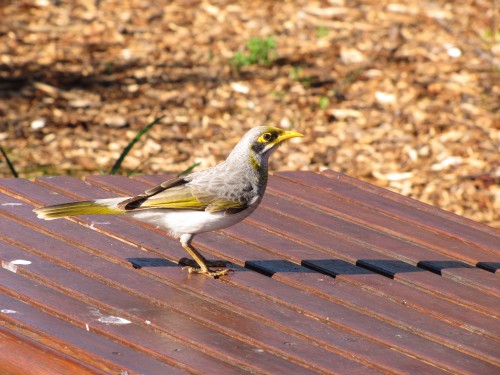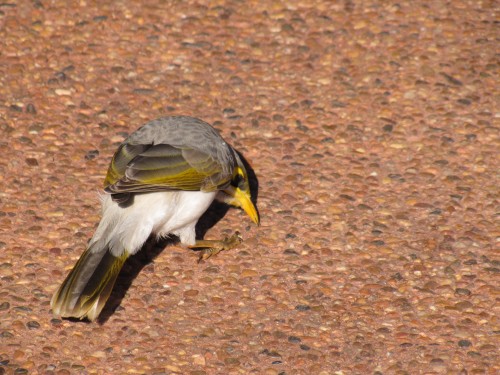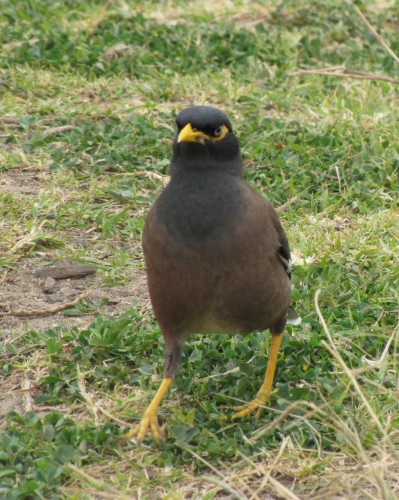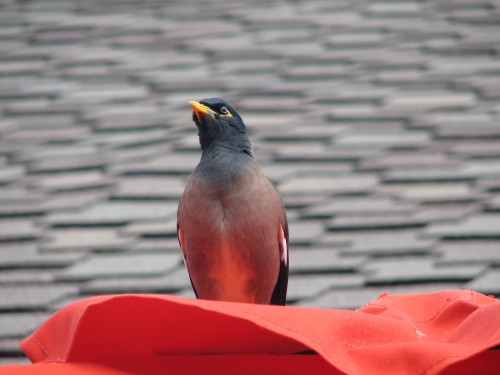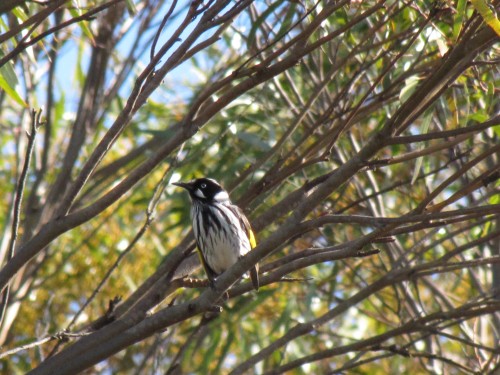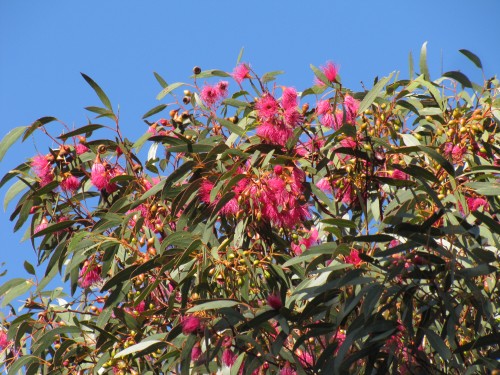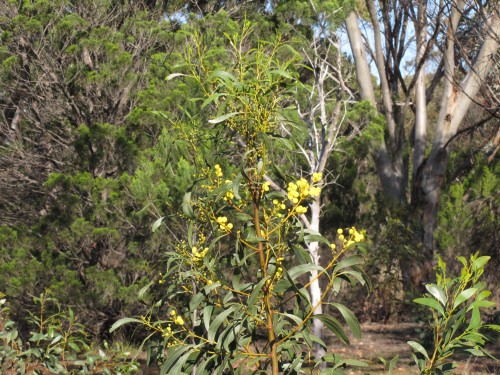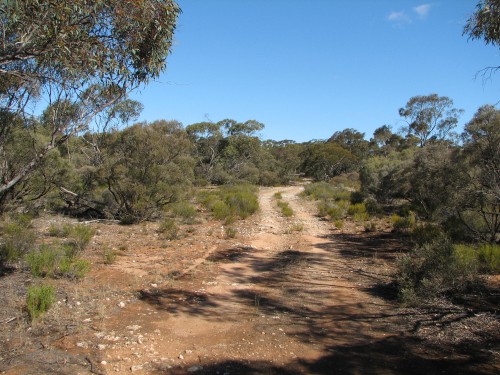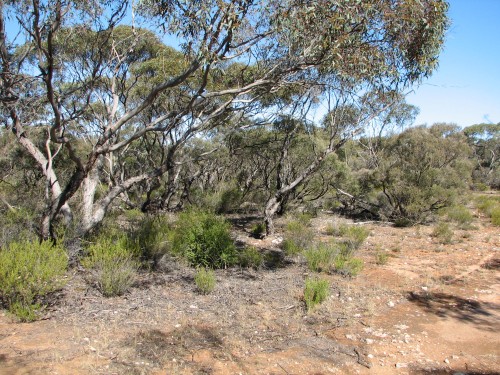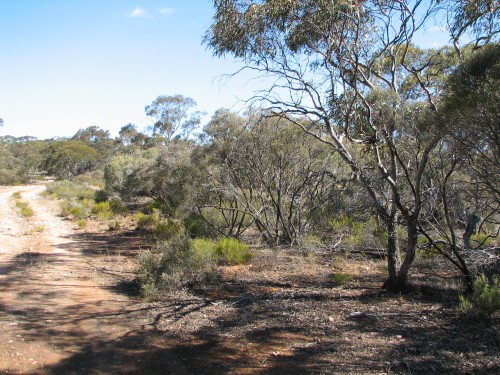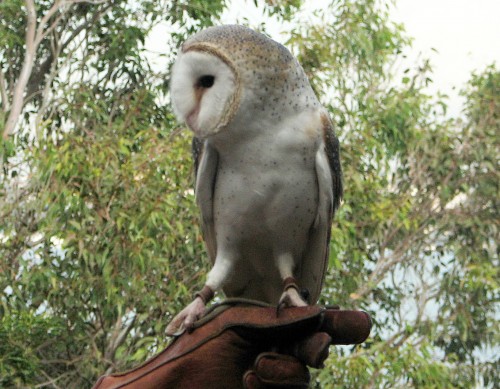Cheeky Miner birds at Dubbo
One of the things I noticed on our visit to the Western Plains Zoo in Dubbo was the number of honeyeaters. The zoo enclosures and the road visitors take on their tour feature many local plants, especially eucalypts. A good number of these are flowering at any one time and this attracts the nectivorous birds such as honeyeaters.
One of the honeyeater species which came up close and personal was the Yellow-throated Miner. One of them is featured in today’s photos. We treated ourselves to an ice-cream from the visitor centre and sat in the picnic area nearby to enjoy our treat. This miner came up really close, checking out if we had any morsels to share with it. The close proximity of the bird made photography easy.
Yellow-throated Miners are found over much of Australia except for the wetter eastern and southern coastal regions and Tasmania. A similar species is the Noisy Miner.
Further reading:
- Time for a sweet break – another photo of a Miner at the zoo
- Noisy Miner Murray Bridge
- Great birding moments
- Miners v Mynas
Miners v Mynas
I was a little amused last week when there was quite a flurry of correspondence in the Letters to the Editor section of our state-wide newspaper, The Advertiser. A reader wrote in complaining that something should be done about Myna birds in his suburb which he considered pests. He claimed that they were chasing away all the other birds, especially the smaller ones such at wrens and thornbills.
The next day the paper printed a whole page of rebuttals – or rather, a raft of claims of mistaken identity. Several years ago I, too, experienced getting into a long discussion with someone who was adamant that there were Mynas around the Salisbury area in the north of the city. They just would not be convinced otherwise.
The fact remains that there are currently no Common Mynas (also known as Indian Mynas) in South Australia. This introduced species is, however, relatively common in the eastern states and their range is increasing. Only last week my 7yo grandson reported that they now have them in their garden in Artarmon for the first time. (I have seen them up the street but never in their garden.) I have included a photo of a Common Myna below, taken several years ago in the Taronga Park Zoo in Sydney, a few suburbs away from my son’s home.
The species that the correspondent was concerned about was the Noisy Miner, an Australian native honeyeater species as shown in the photo above, taken a few years ago in the Adelaide Botanic Gardens. The Noisy Miner is a gregarious and mostly aggressive species which can be very dominant in some situations. Their bossy ways discourage smaller species like wrens, thornbills and other honeyeaters until those species leave and never return. One of the ways of combating their habits is to plant up gardens with smaller Australian native plants because they prefer more open, grassy, lawned areas.
As an interesting aside, we do not have Noisy Miners on our five acre block on the edge of Murray Bridge. They are relatively common along the river reserves and throughout the town, but in over 30 years they have never – to my knowledge – visited out property, though I have expected them for some years now. I did see one small family group about 500 metres down the side road from our place, but so far they have not moved any closer. We certainly do not want them invading our orchard – the Mallee Ringneck parrots are pest enough in the fruit trees. (Placing bird netting over the trees mostly works effectively.)
The threat of Common Mynas
The following is a quote from our government department PIRSA (Primary Industry):
The species is listed by the IUCN (World Conservation Union) as one of 100 of the world’s worst invasive alien species alongside Common Starlings, Red Foxes and Cane Toads. The Common Myna is a moderate pest of agriculture causing damage to orchard fruits such as fig, apple, pear, strawberry, guava, mango and grape. It also damages standing cereal crops including maize, wheat and rice.
In several countries it is considered an environmental pest and is reported to eat eggs and young birds and mammals including endangered species. The Common Myna aggressively competes for nest hollows and food, adversely affecting the breeding success of other birds and hollow-nesting mammals. It has been observed
attacking terns on islands as well as taking the eggs of other sea birds, possibly interfering with those birds’ breeding and general behaviour. The Common Myna is also known to spread avian malaria to other birds.
Further reading:
- Website: Primary Industry and Regions South Australia – this page lists 6 PDF documents relating to potential pest bird species in South Australia: Common Myna, Canada Goose, Red-whiskered Bulbul, Common House Crow, Indian Ring-neck Parakeet and Barbary Dove. It also has other documents relating to potential animal pests such as the Cane Toad.
- This is not a minor threat
- Birds in the Sydney CBD
- Noisy Miners causing problems
- Great birding moments #10 Noisy Miner Adelaide Botanic Gardens
Birding at Browns Road Monarto
This afternoon my wife and I took a detour coming home from Mt Barker in the Adelaide Hills. We had been there for a appointment, after which we had a relaxing lunch in one of the local cafes. Instead of taking the South-Eastern Freeway home to Murray Bridge we took the old Princes Highway route. It is a longer, more circuitous route but far more interesting.
Just past Callington we turned off into Browns Road near Monarto. We stopped at a spot where we could park the car safely before going on a short walk through the scrub. The sign on the gate says “Monarto Woodlands” but local birders usually refer to this area as Browns Road.
The scrub here is a confusing mixture of plant species. While there are some species common to the surrounding region, many of the trees and shrubs are introduced from other parts of Australia. A quick glance shows many Western Australian species, for example. This has come about due to extensive planting back in the 1980s when this area was designated as a satellite city to Adelaide. While a large area of farming land was purchased by the then state government, and the city was planned, no building ever occurred and much of the land has been returned to productive agricultural use. The only exception has been the establishment nearby of Monarto Open Range Zoo, part of Adelaide Zoo (and well worth a visit too, I might add).
We didn’t have all that much time on our visit this afternoon and my back and hips were being quite a pain. In the few minutes we were there I managed to record the following species:
- White-winged Chough
- Singing Honeyeater
- Red wattlebird
- New Holland Honeyeater (pictured above)
- White-browed Babbler
- Peaceful Dove
- Crested Pigeon
- Grey Fantail
- Willie Wagtail
- Yellow Thornbill
- Spiny-cheeked Honeyeater
- Silvereye
- Grey Shrike-thrush
- Common Starling
- Adelaide Rosella
- Australian Magpie (white backed)
- Weebill
While this is not a great list it is not bad for about ten minutes of birding. In recent weeks many other South Australian birders have visited this area and have reported far more species. I must visit more often, seeing it is about a 20 minute drive from home.
Some of the plants flowering are shown in the photos below.
Further reading:
Birding in Lowan Conservation Park
A few Sundays ago we had a break in our cold, wintry weather and we went for a drive to Lowan Conservation Park, a 40 minute drive north east from home in Murray Bridge, South Australia. The park is about 15 kilometres south east of Bowhill. I had visited this park on several previous occasions and found that the birding can be either a feast or a famine; it all depends largely on what is in flower, or the weather conditions.
The park is predominantly mallee woodland (see photos) with a mixture of other smaller scrubs and bushes. My wife has written about some of the plants on her site here.
On our most recent visit I didn’t even bother to take any photos; I saw no birds to photograph, well, none within range. And while we had our picnic afternoon tea in the sun I heard very little. It was a real struggle to get a short list of birds – mostly heard. (PS The photos on this post were taken on another visit.)
Bird list:
- Little Raven
- Mallee Ringneck
- Grey Shrike-thrush
- Weebill
- White-winged Chough
- Singing Honeyeater
- Australian Magpie
- Grey Butcherbird
- Galah
- Grey Fantail
- Noisy Miner? (or Yellow-throated Miner? – I only heard them)
- Striated Pardalote
That is not a great list, but there was not much flowering. In a park of some 660 hectares one would expect far more honeyeaters, but the mallee has to be in flower. Honeyeater species I would expect to see – or already have seen on other occasions – include: Striped, White-fronted, White-eared, White-plumed, Spiny-cheeked, Purple-gaped, Yellow-plumed, Brown-headed, New Holland and Red Wattlebird.
In addition to the honeyeaters I would expect to see more parrots, pigeons, wrens, thornbills, chats, woodswallows, robins (I did see one, but it flew off before I could get a positive ID), owls, nightjars, frogmouths, swallows, cuckoos, eagles, kites, falcons and even a Malleefowl or two. I have seen two Chestnut Quail-thrush there many years ago; I hope that they are still around.
I guess that the best time to visit would be in the spring, when there is a chance of more flowers. I think that it might be worth camping there overnight. By the way – there is only a rough, stony and sometimes sandy track through the park and NO facilities at all.
Trevor
Further reading:
Cold weather birding
I didn’t do much birding today.
Or yesterday.
I decided that the weather was far too cold. We are having a really cold winter’s snap here in South Australia with heavy rain, very cold temperatures, blustery winds and even snow. Snow in our state is such a rarity it receives plenty of coverage in the news. We average one snow fall every few years and it only lasts a few moments on the ground – if it reaches the ground. Nothing like the countries where some of my readers reside, I know, but then you don’t have to contend with our severe summers which we take in our stride. Or our snakes. Or spiders. Or sharks… you get the picture?
Despite the cold, inclement weather I was still able to be aware of the birds in and around our home and garden. The New Holland Honeyeaters and Red Wattlebirds were busily feeding on a few native plants and trees which are currently flowering. The Australian Magpies have stopped fussing about whether it is time to start building nests yet. A small party of White-browed Babblers scratched their way through the leaf litter a few days ago and the little family of Superb Fairy-wrens always seem to be happy to flit and hop around the garden, no matter what the weather dishes up.
Yesterday I noticed two Little Ravens scratching around in the grass I haven’t mowed recently. They seemed to be having a good feast. A few days ago I also heard several Grey Currawongs calling but they must have been just passing through our mallee scrub and not stopping. Earlier in the week I heard a Barn Owl screeching outside during the evening; we had visitors at the time so I didn’t go out searching for it.
Further reading:
- Just click on the name of any of the species mentioned in this post. A link will take you to photos and stories about each of the species mentioned. Reading those articles might help you to while away some poor weather in your part of the world.
